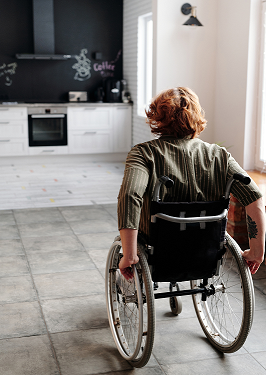International Wheelchair Day is commemorated on March 1. It is one of the most widely used assistive devices to promote mobility and improve the quality of life for people who have difficulty walking.
Importance of the wheelchair
Wheelchair mobility opens up opportunities for wheelchair users to study, work, participate in social activities and access services such as healthcare. In addition to providing mobility, an appropriate wheelchair benefits the physical health and quality of life of wheelchair users.
To ensure effective mobility, users of these devices need a wheelchair that is properly adapted to their specific needs. Statistics show that around 10% of the world’s population, i.e. some 650 million people, have disabilities and, of these, 10% require a wheelchair. Thus, it is estimated that about 1% of the total population needs a wheelchair, i.e. about 65 million people worldwide.
A suitable wheelchair
According to the British organization Physiopedia, a wheelchair is suitable when it meets the needs of the individual and the conditions of the environment, provides adequate adaptation and postural support based on sound biomechanical principles, is safe and durable, is available and accessible, and can be maintained at the most economical and affordable price.
A suitable wheelchair can open up a new world for the user, moving from exclusion to inclusion, participation in all social activities, sports and entertainment, all leading to independence, better health and a higher quality of life.
Benefits of a proper wheelchair
The benefits of using a proper wheelchair are:
- Mobility:
An active lifestyle has been shown to have physical and mental health benefits, and people who participate in physical activities have a lower risk of cardiovascular disease, non-insulin-dependent diabetes mellitus, osteoporosis, osteoarthritis, and several types of cancer. A suitable wheelchair provides the user with the freedom to move around, increasing overall physical activity levels and daily mobility.
- Independence:
Difficulty walking, the need to frequently lean on someone or hold on to their arm while walking beside them, decreased balance and fear of falling can cause people to isolate themselves from friends and family. A wheelchair that is functional, comfortable and can be propelled effectively can result in increased activity levels. Independent mobility and increased physical function can reduce dependence on others. Thus, wheelchair users can become more independent and have more control over their own lives.
- Health:
A wheelchair that is functional, comfortable and can be propelled efficiently can result in increased levels of physical activity, thus improving physical and mental health. A well-fitted wheelchair with cushioning, combined with proper user training, can reduce common problems such as pressure ulcers, progression of deformities or contractures, and other secondary conditions associated with poor posture.
- Self-esteem and self-confidence:
Wheelchairs have been shown to have a profound influence on quality of life and participation. Wheelchair users may feel more confident and have more self-esteem when they have a wheelchair, often considered an extension of the user’s body, which adapts to the user, so the weight and dimensions of the chair affect the person’s ability to function at home and in the community.
- Quality of life:
With the maintenance of health comes increased access to opportunities for education, employment, and participation within the family and community. These factors also contribute to increasing the wheelchair user’s quality of life.
- Access to community life:
Access to community life involves being active in family and community activities. This plays a key role in the health and well-being of wheelchair users and has been shown to be a key factor in preventing deterioration in the health of people with spinal cord injury. Being able to access the community and move around outside the home is important for social participation and engagement and also for many positive health indicators.
- Economics:
A wheelchair often makes the difference between being a passive recipient and an active contributor. Economic benefits are realized when users are able to access educational and employment opportunities. With a wheelchair, the person can earn a living and have greater economic independence.


